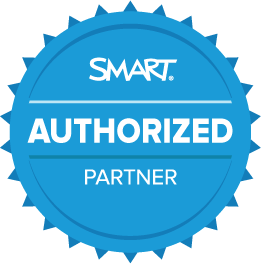Making good decisions about classroom tech
- Jul
- 15

Who doesn’t love new technology? Certainly not students – and most teachers, too. With new devices, apps and services coming at us all the time, it’s easy to get distracted, or, worse still, fall into the new-tech trap. But it’s easy to avoid if you keep asking one simple question: will this technology lead to better outcomes?
It’s a simple question on the face of it, but of course lurking beneath its surface lie many more. And you might consider asking them in partnership with your fellow educators, administrators and IT team members. An international survey of 8000 teachers found that 59% believe they should have the last word in what technology is bought for their classrooms. That’s probably a debate for the ages, but if everyone keeps the following considerations in mind, good decisions – and good outcomes – should follow.

Will the tech help students and teachers?
You’re buying classroom technology. A classroom is made up of teachers and students together, so ask yourself if what you’re looking at works for both. It might not be practical to ask your students en masse but asking a representative sample of the student body should give you some valuable insights into how they learn and how they’d like to learn.—

Will it be easy to deploy and use?
This applies to physical hardware as much as software: you want technology that’s robust, simple to use, durable, and hard to break. You don’t need the support headaches of constantly explaining or fixing technology that isn’t suitable for a busy environment and users of varying abilities.
And of course, ‘simple’ doesn’t mean boring or narrow. It means usable, reliable and easy for students to engage with. As any teacher knows, ‘simple’ can be a difficult goal to achieve.—

What problem will it solve?
If you haven’t identified a problem, you don’t need new technology. When you know what the problem is, it’s easier to test whether something you’re considering is right for you.
Ask yourself if the new technology lets teachers or students do something they couldn’t do before. Look for technology that breaks down barriers to learning and promotes engagement between teachers and students. These are education’s biggest challenges – deploying technology that helps overcome them would be a major achievement.—

Can the school support it?
Schools can run into problems if they buy state-of-the-art technology but don’t have the infrastructure to support it. Whether network bandwidth, data storage, information architecture or some other factor is the problem, there’s nothing more frustrating – and wasteful – than technology that can’t be fully, or properly, used. Teachers and students might not appreciate it, but sometimes the best technology investment is one that takes care of things behind the scenes.—

Do you have the right software?
When you provide the devices and operating systems, this isn’t a consideration, but if you’re BYOD, this could be your final stumbling block. Software that works with a web browser might not work with the browser on a tablet. This means doing your homework and perhaps running some education sessions for the teachers involved.
Just like teaching, getting technology choices right requires research and planning. Your teaching staff can help you when it comes to keeping things simple by providing a view of where the real educational value is. With that frame around the question, you’ll make the best choices.






